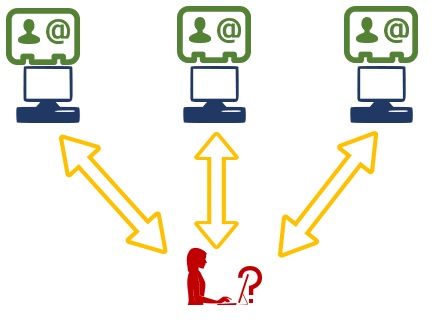- Business Concepts ›
- Marketing and Strategy ›
- Computer Assisted Interviewing (CAI)
Computer Assisted Interviewing (CAI)
Definition, Importance & Example
This article covers meaning & overview of Computer Assisted Interviewing (CAI) from marketing perspective.
What is meant by Computer Assisted Interviewing (CAI)?
Computer Assisted Interviewing (CAI) refers to how computers can be used in survey questionnaire development and administration. Instead of using a paper questionnaire, interviewees carry laptops in computer assisted interviewing from which they read out questions and enter answers to survey questions. The data is then transferred via modem back to the field centre. Computer assisted interviewing is thought to be one of the most influential developments in survey data collection.
CAI was first used in the UK in 1990 on the Labour Force Survey, and by 1995, all of the social surveys carried out by the Office for National Statistics used this method.
Importance of Computer Assisted Interviewing (CAI)
In today’s world where data is considered the new oil, it is very important to have decisions that are based on solid data rather than just hunches. Computer assisted interviewing is just a medium or to say a catalyst that fastens the process of data collection for marketing research as we are considering the marketing domain. CAI enlarges the survey’s demographic specifics and helps researchers collect data seamlessly. From the cost aspect of computer assisted interviewing, it is literally inexpensive. The use of CAI software enables academicians and researchers to look through the data analysis without much structuring of the data collected.

The figure shown encapsulates the concept of CAI, where a person with questionnaire can easily conduct the survey without any constraints of location or proximity.
Advantages and Disadvantages of Computer Assisted Interviewing
The advantages of computer assisted interviewing are cited as follows:
1. Cost savings can be made
a. No need for any data entry at the field centre
b. Results can be obtained quickly
2. Questionnaires can be improved
a. Complex routing and checking are possible
b. Changes can be made in between interviews
3. The data is ready to analyse very soon after the fieldwork is carried out
The disadvantages of computer assisted interviewing are cited as follows:
1. Problems associated with I.T. can be encountered
a. Computer programmers are needed who are familiar with both survey research and IT – these are not usually easy to come by
b. Time that is saved at the end of the survey process
2. Interviewers can also encounter problems
a. Respondents may be wary of a machine; this may either prevent them from taking part in the survey at all, or may affect their responses
b. They would need extra training in how to use the CAI software
3. Problems encountered by researchers or academics
a. It can be very difficult to decipher CAI questionnaires on paper
b. There is a rapidly expanding volume of documentation
Example of Computer Assisted Interviewing
Taking a hypothetical case where Coca-Cola wants to come up with a soft drink with spices in it. Before going for tasting, they want to know whether this idea is embraced by the consumers or not. For this they hire a marketing research firm to know the sentiments of buyers in this. The company, seeing the scale of the product will go for computer assisted interviewing technique and real time feedback from the customers.
Hence, this concludes the definition of Computer Assisted Interviewing (CAI) along with its overview.
This article has been researched & authored by the Business Concepts Team which comprises of MBA students, management professionals, and industry experts. It has been reviewed & published by the MBA Skool Team. The content on MBA Skool has been created for educational & academic purpose only.
Browse the definition and meaning of more similar terms. The Management Dictionary covers over 1800 business concepts from 5 categories.
Continue Reading:
What is MBA Skool?About Us
MBA Skool is a Knowledge Resource for Management Students, Aspirants & Professionals.
Business Courses
Quizzes & Skills
Quizzes test your expertise in business and Skill tests evaluate your management traits
Related Content
All Business Sections
Write for Us